Thought-provoking ‘Bloordale Beach’ short doc opens possibilities for city building
Fourth year Image Arts film studies student and emerging writer-director Beth Warrian (external link, opens in new window) explores a humorous public art project on reclaiming public space in a new short doc (available to screen below). The film sparks important dialogue around the housing crisis and asks viewers to consider who holds the power when it comes to city planning and development.
Bloordale Beach
Amidst pandemic isolation and mounting housing insecurity. In a breath of time between teardown and high rise, a symbol of community
Between May 2020 and September 2021, public art intervention ‘Bloordale Beach’ (external link, opens in new window) , created by local Toronto artist Shari Kasman (external link, opens in new window) , sought to reclaim an empty lot in the Bloor and Dufferin area as public space during a time of social isolation. The large, vacant and fenced site awaiting development by Toronto's District School Board (TDSB), was made accessible by Kasman and an anonymous friend by the removal of fence bolts. Humorous signage was created and affixed to the fence, and the addition of props like beach chairs were used to foster playful engagement and co-creation (with community members contributing their own ideas and objects).
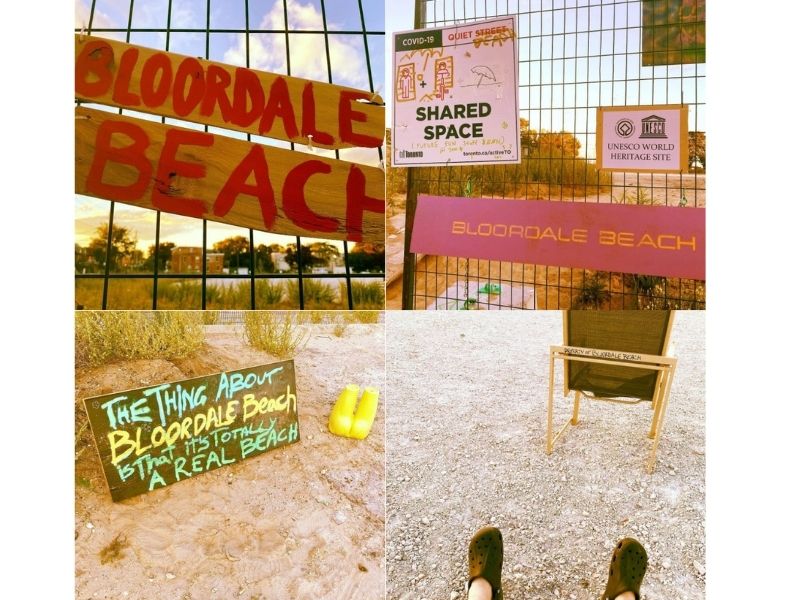
Photo credit: Chris Houston via Twitter @chris_m_h
Warrian explains that Kasman erected signs dubbing the space “Bloordale Beach” (though the site is not located near a body of water) and even led guided “beach tours” as part of the Big on Bloor Festival in both 2020 and 2021.

Filmmaker and fourth-year IMA student Beth Warrian
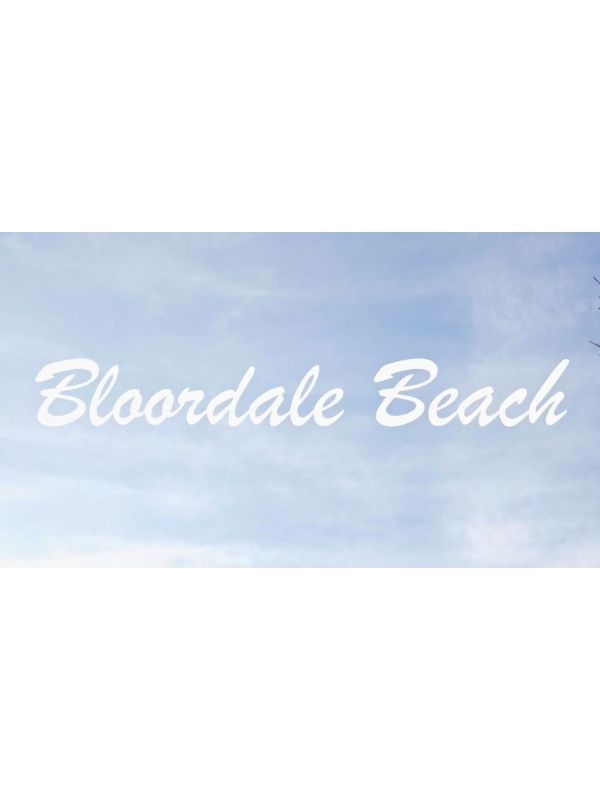
Film still from 'Bloordale Beach' doc
Warrian’s short film of the same name examines Kasman’s public art project as a springboard to consider larger issues of public space, community and the city’s housing crisis.
“The site invites a layered reading of the increasing social and economic untenability of life in downtown Toronto—and many major urban centres worldwide—as exacerbated by the COVID-19 pandemic,” reads Warrian’s film description.
Creative approaches to documentary and visual communication
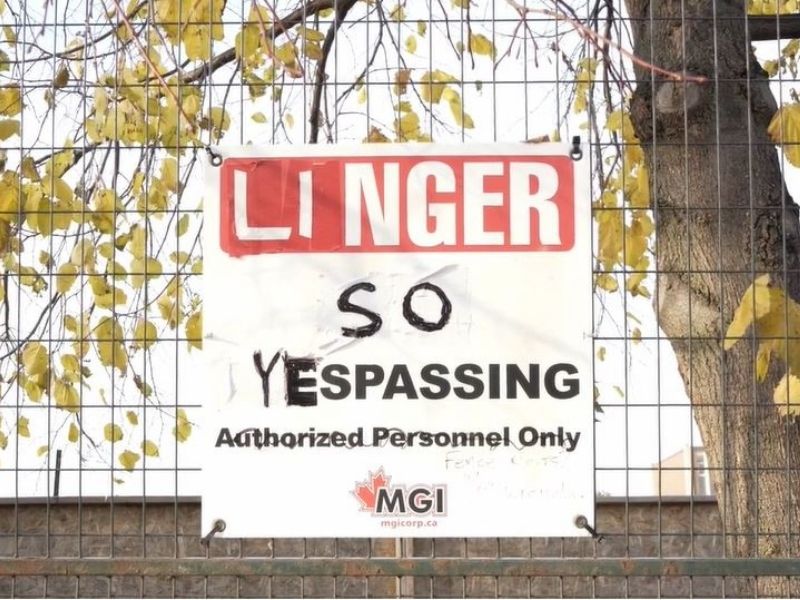
Film still of signage affixed to vacant lot. Courtesy of Beth Warrian
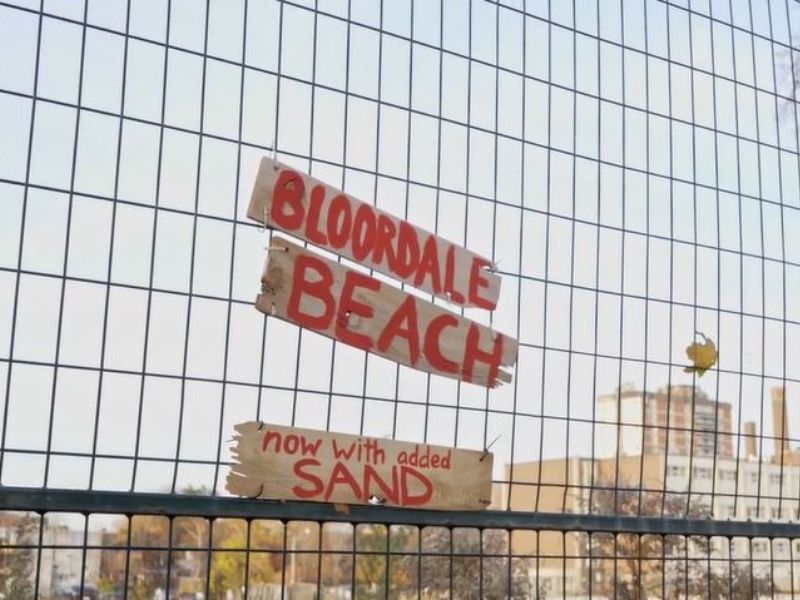
Film still of signage affixed to vacant lot. Courtesy of Beth Warrian
Warrian was inspired to create the film as part of an assignment for a class called ‘Disaster Images’. She found herself walking past the beach daily and thinking about the use of playful humour to depict disaster.
“Just as the beach fostered joy and community engagement in a trying time, the video poses an alternative strategy to the exhausting cycle of ‘disaster porn’ imagery for depicting social crises,” writes Warrian.
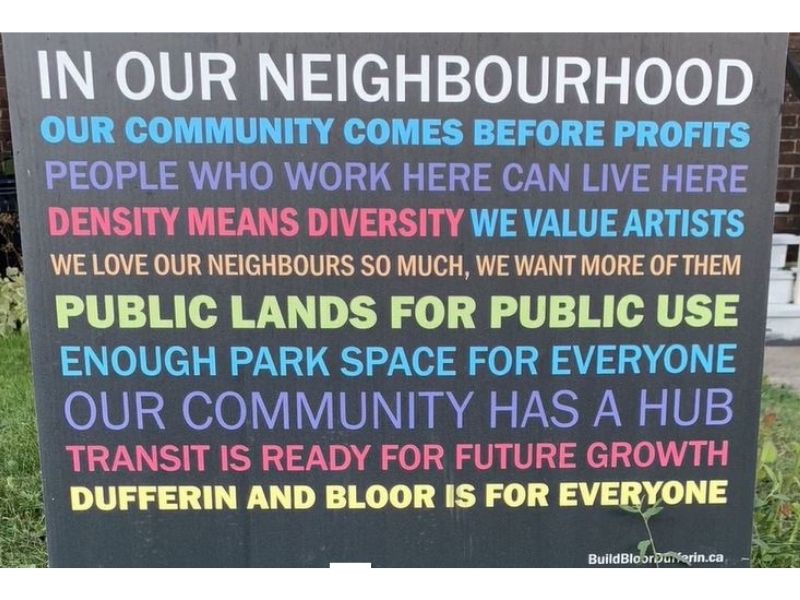
Film still of a Bloordale neighbourhood sign. Courtesy of Beth Warrian
The film, which exudes a spontaneous energy, has screened at various events and festivals this year including the Breakthroughs Film Festival in Toronto, Hillside Music Festival in Guelph, Guelph Film Festival, and the Better Cities Film Festival in Detroit.
Warrian also recently screened the film as part of the inaugural CivicLabTO Academic Summit (opens in new window) , a collaborative partnership initiated by the City of Toronto with eight local higher-education institutions (HEIs) including Ryerson University -led by City Building Ryerson (opens in new window) - and featuring academic, municipal and city-building thought-leaders. The event brought together public-sector leaders and academic researchers to discuss urban recovery and city building post-pandemic to help build stronger public policy and foster the city’s resilience in ways that are inclusive, equitable and sustainable.

Toronto Mayor John Tory invites the public to join the inaugural CivicLabTO Academic Summit. Courtesy of Twitter @JohnTory
“For me, [the art project] provoked thoughts on the housing crisis,” shares Warrian. “And the irony of having huge swathes of unused space in the middle of such a crowded municipal area.”
COVID-19 has exacerbated existing inequities through the disproportionately negative social, economic, and health impacts on vulnerable communities. In the film, Warrian asks the critical questions;
“Who reaps the privilege of planning? What is ushered in, and what is left behind?”
The Creative School at Ryerson University
The Creative School is a dynamic faculty that is making a difference in new, unexplored ways. Made up of Canada’s top professional schools and transdisciplinary hubs in media, communication, design and cultural industries, The Creative School offers students an unparalleled global experience in the heart of downtown Toronto.